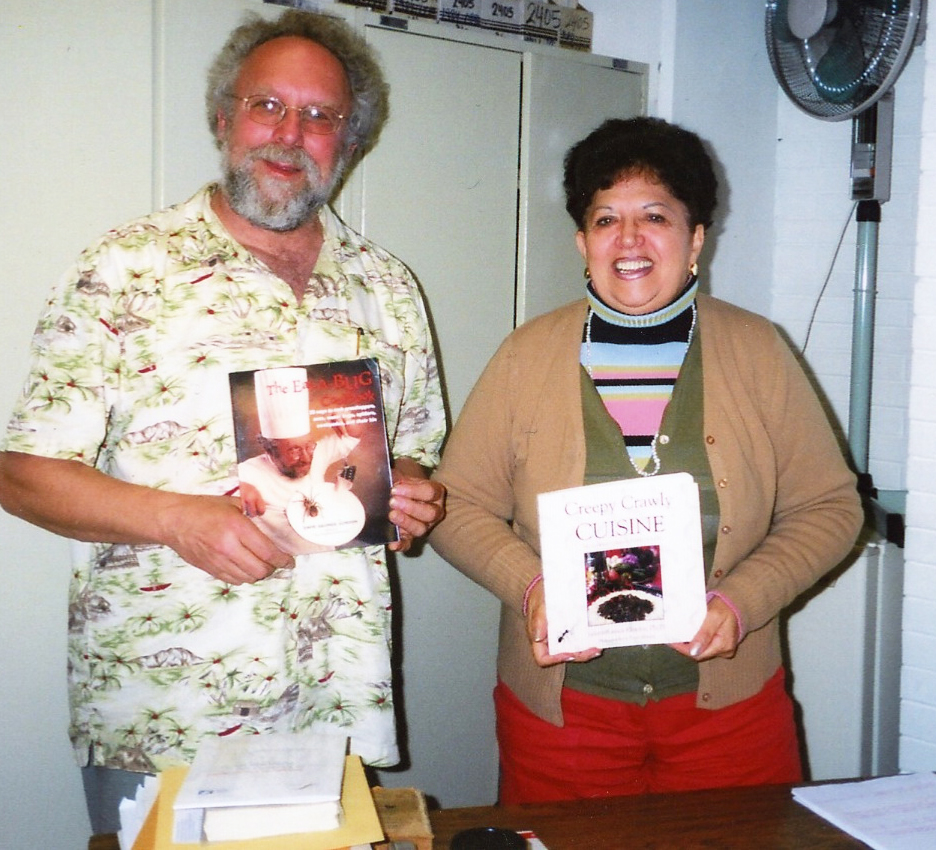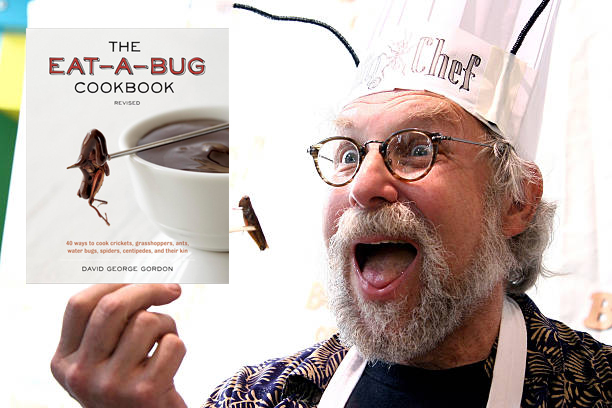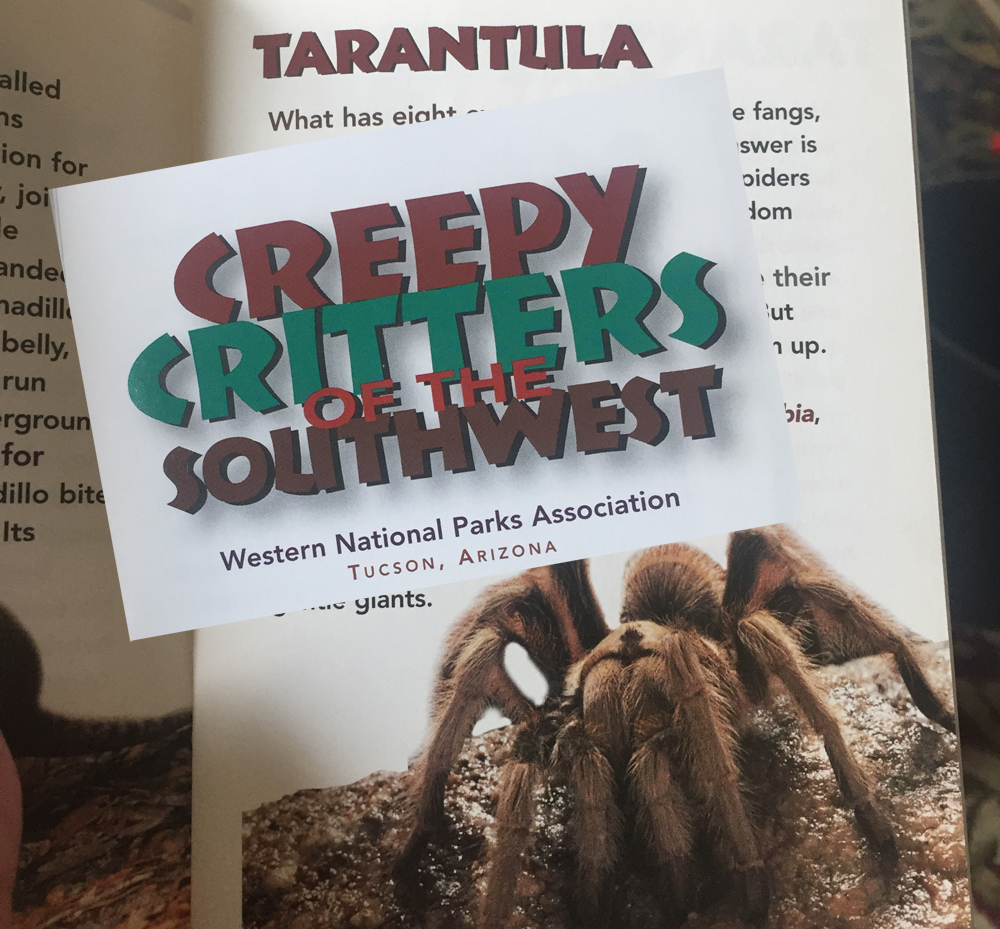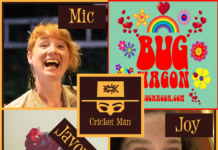Words Matter: Let’s Can the “C-Words”
by David George Gordon
Some of you may already know about my campaign to eradicate what I call “the c-words,” creepy and crawly— all too commonly used to describe the bugs that many of us eat.
I think it’s a demeaning expression, to both the bugs and we chefs who cook with them. “Creepy to whom?” I often ask the journalists and video teams I interact with. “Certainly not to me or my bug-eating buddies, roughly 80 percent of our word’s cultures,” I explain.
But despite my efforts, I frequently see the c-words in print and online. Most recently, NPR’s food blog The Salt actually quoted me using this odious phrase— something I’d never do.
The c-words are especially prevalent in kids’ science or natural magazines, where the reporters’ prejudices about land-dwelling arthropods spill over, unintentionally poisoning the minds of impressionable young readers.
Ok, at this point in my rant, I must state that I’m willing to pardon Julieta Ramos-Elorduy, cultural entomologist at the University of Mexico and the author of the otherwise wonderful cookbook Creepy Crawly Cuisine. While the book’s title initially bothered me, I later learned that its text was translated from the original Spanish— and that the English-language appellation was more reflective of the publisher’s, not the author’s, feelings for edible bugs.

While we’re on the subject of c-words, I’d like to share a story from my early days as a writer. At that time, I was striving to build a career as a freelancer and, just as challenging, to make a living at it. To make ends meet, I was writing copy for all manner of clients, including cruise ship companies, travel magazines and state and federal government.
One day, the phone rang. It was an editor from the nonprofit Western National Parks Association, asking if I was available to write a short book on rattlesnakes, bats, owls and other so-called “creepy critters” of the American Southwest. The book’s title? You guessed it: Creepy Critters of the Southwest.
Eager for the income, I explained that I liked the project; however, I found the choice of titles unfortunate. I offered a few alternative titles but the publisher stood firm about the one it had picked. Anyway, I wound up convincing myself that I could fine-tune the book’s text to satisfy the WNPA and myself. I completed the manuscript in a few months, pocketed the cash and thought little about this particular project until recently.
Last month, I was going through a box of my past writings when I uncovered a copy of that book, published in 2004. I was pleased to see how I’d managed to work around the questionable title.
Here’s what I wrote in the introduction to Creepy Critters of the Southwest:
“What counts as a creepy critter? In this book, it’s something that sends a shiver down your spine or stops you in your tracks. All thirteen of the critters described on these pages are known to have those effects— especially on people who don’t know the critters very well. Once people learn about these so-called ‘creepy critters,’ their fear is often replaced by feelings of respect, gratitude, or sheer awe.”
The editorial tone throughout the book was lively, just like the publisher wanted, but respectful of the natural world and its wild inhabitants. For example, in the section on tarantulas, I described arachnophobia as “unreasonable but real,” adding that “only the tarantula’s prey— mainly insects— should be fearful of these gentle giants.” I referred to Gila monsters as “low-riders” and advised readers, for safety’s sake, “to leave this mega-reptile alone.” Bats,” I wrote, “eat pesky mosquitoes. They also pollinate plants. Without these winged mammals, our world would be an uncomfortable place.”
I bring all of this up because of my underlying philosophy, one that colors nearly everything I write and say. Years ago, I spoke with a children’s book author from the island of Hokkaido in northern Japan. He told me about his visit with an Ainu elder— a descendent of the island’s original human occupants. She told him that we humans were created to serve a sole purpose: to sing the praises of nature. With this woman’s wisdom in mind, we must be thoughtful about the words we choose to describe nature in all of its varied forms.
We bug eaters must confront those who are unknowingly putting down the insects and spiders that serve such a wide range of functions— as plant pollinators, nutrient recyclers and sources of food for almost everything, from other insects to large mammals such as bears, jungle cats and, yes, people. Without insects to perform these important tasks, I’m sure that our planet would screech to a grinding halt in a matter of months.
Now that would be “creepy” to say the least.
~
Click here to visit David George Gordon’s website.
Click here to buy the Eat-a-Bug Cookbook.
















